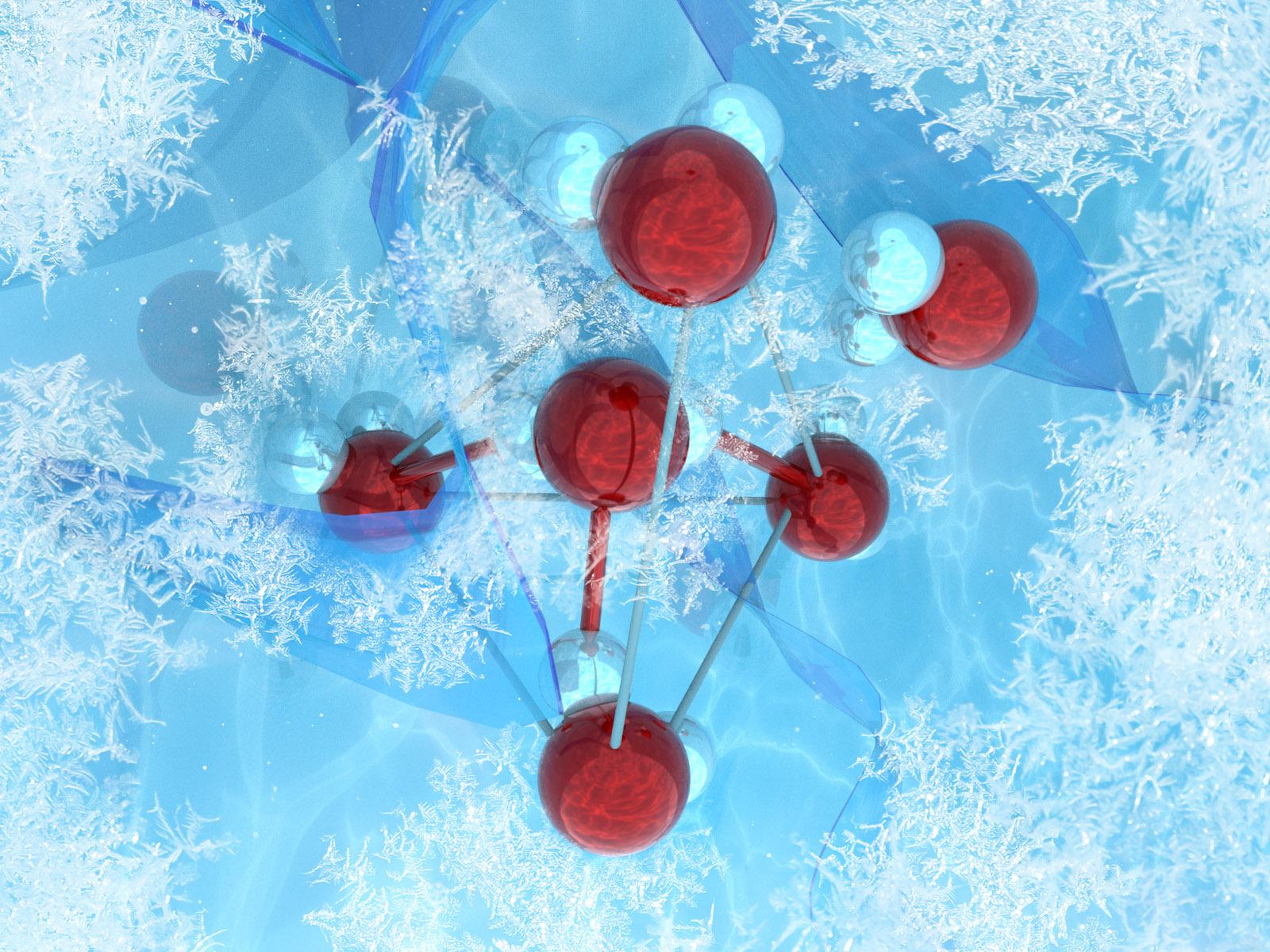Structural Relaxation and Crystallization of Supercooled Water
Relaxation kinetics probed at supercool temperatures using laser heating approach

For the two structural motifs of supercooled water, hyperquenched glassy water (shown here) relaxes more quickly than low-density amorphous solid water.
(Illustration by Cortland Johnson | Pacific Northwest National Laboratory)
The Science
Despite it being the most abundant liquid on Earth, water contains many anomalies that are yet to be fully understood. As it cools, water molecules rearrange as the liquid begins its transition to the solid state. In this study, a team of researchers observed the structural relaxation and crystallization of supercooled water between 170 and 260 K. At these temperatures, supercooled water rapidly solidifies, making it difficult to study. The scientists used infrared spectroscopy to assess the structural evolution of transiently heated water films and determined that the rate at which supercooled water relaxes toward its equilibrium structure depends on the initial structure: either hyperquenched glassy water (HQW) or low-density amorphous solid water (LDA).
The Impact
Very little is known about the structural dynamics of supercooled water because its rapid crystallization effectively prohibits many means of study. In their previous work, the researchers developed a pulsed laser heating technique that allows them to observe the structural changes of water at different temperatures using infrared spectroscopy. This study builds upon that research by elucidating the complex relaxation kinetics associated with this structural rearrangement before crystallization. This new work also provides further validation of the laser heating approach by proving that this method can provide valuable data on relaxation kinetics at temperatures previously thought to be inaccessible.
Summary
In an earlier study, the researchers established that, at equilibrium, the structure of supercooled water could be reproduced using a linear combination of the two structural motifs, HQW and LDA, across a range of supercooled temperatures before crystallization. This study extends those findings to determine the complex relaxation kinetics that govern rearrangement within the structurally heterogeneous environment containing a distribution of energetic barriers.
The researchers also used the pulsed laser heating technique to determine that crystallization times for transiently heated water films were always long compared to the structural relaxation times. Their results match previously reported crystallization and relaxation times that were calculated from molecular dynamics simulations.
Contact
Greg Kimmel
Physical and Computational Sciences Directorate, Pacific Northwest National Laboratory
Gregory.Kimmel@pnnl.gov
Funding
This work was supported by the U.S. Department of Energy (DOE), Office of Science, Basic Energy Sciences program, Division of Chemical Sciences, Geosciences, and Biosciences.
This research was performed at the Environmental Molecular Sciences Laboratory, a national scientific user facility sponsored by the U.S. Department of Energy (DOE)’s Biological and Environmental Research program and located at Pacific Northwest National Laboratory, which is operated by Battelle for DOE.
Published: July 13, 2021
Kringle, L., Thornley, W. A., Kay, B. D., & Kimmel, G. A. (2021). Structural relaxation and crystallization in supercooled water from 170 to 260 K. Proceedings of the National Academy of Sciences, 118(14), e2022884118. https://doi.org/10.1073